Merrilee Lee: Good evening, and welcome to the Hoard Historical Museum.
Im Marilee Lee, the director of the museum, and we are thrilled to host both Caryl Pagel and PBS Wisconsin for this program on Lorine Niedecker.
As someone who lives in Fort Atkinson like Lorine did, it is always inspiring to be reminded of Lorines legacy not just here, but in a far wider area than our citys limits.
So, Caryl, thank you for reminding us of Lorines importance to all of us.
And its my honor to introduce Nick Gulig, our current poet laureate of Wisconsin.
Nick is a professor at UW-Whitewater, and besides also being inspired by Lorine, he is a poet who lives in Fort Atkinson.
Which makes me think there might be something in Fort Atkinsons water that creates poets.
[audience laughing] And on that note, Nick, Ill turn this over to you.
[audience applauding]
Nicholas Gulig: In the footsteps of Lorine Niedecker, Caryl Pagel set out around Lake Superior, following with her young son as best she can, a trip previously taken in 1966 at the end of her life by Lorine Niedecker, Wisconsins most notable poet.
Quote, not replicating her path around the lake exactly, but wandering with hope and openness to see what Niedecker saw.
She writes, Every day is an intimacy.
How close can we step before silhouettes touch?
How much can the shade of two shadows overlap?
To me, these questions feel rooted not in the anxiety of influence, but in gratitude for it.
Her trip around the lake, a form of active recognition of seeing clearly the lines connecting her to those who came and wrote before.
I love these lines of inquiry because they celebrate and credit, pay tribute, and give thanks.
At their core, these gestures remind us we are not alone.
That language is a communal act in which the living and the dead accept each other, work together, speak to and through and of each other.
If this is true, it means that no one is an island.
We demand, define, and are defined ourselves by the living vibrancy of our relations, the little intimacies too easily forgotten, too often forfeited upon the solitary altar of the self.
In addition to being a writer, Caryl is also an educator, an associate professor at Cleveland State University, and an editor and publisher running Rescue Press, which she founded in Milwaukee, as well as the Cleveland State University Poetry Center.
In this way, Caryls shadow overlaps with and helps to form the community of which countless students and other writers are a part, myself included.
Born in Iowa, raised in Wisconsin and Illinois, Caryl Pagel holds a BA from the University of Wisconsin-Madison and MFAs from the School of the Art Institute of Chicago and the Iowa Writers Workshop.
She has taught creative writing, literature, composition, and humanities courses at the University of Iowa, the University of Wisconsin-Milwaukee, Carthage College, Milwaukee Institute of Art and Design, and Columbia College Chicago.
The author of three books of poetry, a collection of essays, and three chapbooks, her writing has appeared in some of the most important and influential journals in the country.
Currently, Caryl is working on a book-length essay about Lorine Niedecker and her relationship to regional politics, the Great Lakes, small press publishing, humor, and reading.
It is my honor to introduce and welcome to Fort Atkinson, my friend Caryl Pagel.
[audience applauding]
Caryl Pagel: Thank you so much for that, Nick.
That was beautiful.
Ill just, you know, echo some of your sentiments and say that one of the great gifts of thinking about Niedecker and writing about her these last couple of years has been getting to collaborate with Nick.
So thats really beautiful, thank you.
Okay, so Im here tonight to talk about the 20th century American poet Lorine Niedecker, who some of you know is from Wisconsin and grew up and lived just a couple of miles away from here in Black Hawk Island.
And as just a little bit of an intro, a couple of notes.
Ive divided my talk up into sections, and theyre matched with photos with a slideshow here that youre gonna see, and there are slides of her books and some of the places that she visited.
Theres a couple in there from the trips that Nick was talking about.
And then also a bunch of archival photos.
And for that, I want to thank the Hoard Historical Museum, specifically Merrilee Lee, who helped me figure those out, and the Friends of Niedecker group.
And Ill also just thank and give a shout out to the Friends of Niedecker.
You know, a local group who has done so much work in the last couple of decades, getting Niedeckers work and her poetry out into the community and the world.
And if youre interested, Ill talk about this a little bit at the end.
But if youre interested in Niedecker and you dont know a lot about her after tonight, a good place to start is on their website, where they have a bunch of resources and lists of really incredible information and writing about her.
One.
Lorine Faith Niedecker was born on May 12, 1903, in Fort Atkinson, Wisconsin.
A Taurus and earth sign, she arrived in whats frequently the first real week of spring in the Midwest.
Niedeckers parents were Theresa Daisy Kunz, or Beanpole to her, a reference to Daisys slender height, and Henry Niedecker, a commercial fisherman who managed their property on Black Hawk Island, renting cabins to hunters and fishermen.
Henry teaches Lorine to fish and boat.
Hes a drinker, a joker, a man about town, and a poor, if earnest businessman.
Daisy cleans all the time.
She gradually loses her hearing throughout Lorines childhood and becomes increasingly secluded.
The Niedeckers live at the end of the peninsula where Rock River meets Lake Koshkonong, punctuated by Mud Lake, more of a large pond.
A frequently flooding swamp and soggy land to live on.
Shes an only child, raised on a seasonally inhabited peninsula where the river regularly floods.
Their world, damp and wet and muddy.
Lorine occasionally stays with relatives or friends in Fort Atkinson, four miles away, so she can make it to school when the weather is bad.
Lorines a quiet kid with a handful of school friends and glasses specially made for her.
Heres Lorine in a bow, Lorine playing leapfrog, Lorine, age 9 or 10, with tall Daisy perched side by side on a barn bench looking into the distance, sans smiles, sharp profiles.
Lorine, that same age, sitting in Henrys lap, peering up at him and arm around his neck.
Its 1912.
In a future slide, youll see a photo of Lorine in her 20s with a group of fun-looking girls.
She wears pants and more functional, less gendered outfits in her youth, and then for a while after that, mostly dresses, at least in photos, post-war fashion seeming to move backward.
There are pictures of Lorine and her someday husband Al, showing her small and delicate posture in contrast to his height, his disabled arm often tucked down or behind her back, away from the cameras eye.
Soon youll see her iconic Harlequin cat eye glasses and short curly hair.
Niedeckers very blonde her whole life.
Then a bit of gray, I dont know if dyed.
She has a nice smile, bright eyes.
In one photo, Niedeckers mock stepping out of the new Black Hawk house she builds with Al in the 1960s.
Built high as a continued response to the promise of floods.
In one, shes in her neighbor Gail Roubs directors chair perched in front of the river.
Lorine tells Gail she desires a single image or two to represent her, like Dickinson or Willa Cather.
But its too late.
Shes alive in a visual world.
My favorite is a photo that youll see right at the end of Niedecker, standing off center and to the side of Julie, her stepdaughter, and Al later in life in their yard, taking a picture of the photographer taking a picture of her.
Today, youll see some of the existing pictures of Niedecker, courtesy of the Hoard, but there are many more from Lorines point of view.
She made travel books, scrapbooks, collages.
Many of her remaining photos werent of people at all but the natural world, glimpses she caught of the land and the light and the grass and the animals.
Niedeckers nearsighted, has trouble with her eyes, is always noting what shes missed by not quite seeing it.
She looks away for an instant, the wrong way at the right time, sometimes standing in front of something when she should have spun around.
Her poems, so often about seeing landscape and the particulars of place, are flooded with precise but incomplete visions, often focusing on one detail instead of every detail, the compelling uncertainty of looking.
Her sly, knowing inability to absorb the entire panorama.
Many lines of Niedeckers poetry note a failure to clock what she knew was there.
The clarity of one physical sense operating as contrast to another.
Her inability to see well, making other mysteries more transparent.
In an early poem, she jokes, A student, my head always down of the grass as I mow.
I missed the cranes.
And in her later, longer poem, Lake Superior, a section of it reads, Im sorry to have missed Sand Lake.
My dear one tells me we did not.
We watched a gopher there.
Four.
As a girl, Niedecker writes, reads, plays music, helps her mom around the house, watches the rivers work.
As a teen, she reads Ethan Frome, Political Philosophy, and Land Birds East of the Rockies.
She contributes poems to the yearbook and makes a name for herself in debate club.
In 1922, Niedecker attends Beloit College, which many of you know, about 45 minutes south of here.
She writes and reads and studies music, one day going to a guest lecture by Harriet Monroe, the founding editor of Chicagos Poetry Magazine.
One can imagine how exciting a talk like this must have been.
Niedecker witnessing firsthand a powerful Midwestern woman who founded and ran a nationally famous literary journal, speak about her life and poetry.
One can imagine the effects this kind of representation, even briefly, could have on a curious, book-loving young woman.
Unfortunately, shortly after, things back in Black Hawk change and Niedecker has to leave college after her sophomore year.
Henrys running out of money and Daisy is ill, so she goes home.
The decade between dropping out of college when she is in her early 20s and then when we know her as a published poet in her early 30s, is the time in her adult life in which we have the fewest primary sources.
The letters from this period no longer exist, and any journal she might have had were destroyed upon her death.
But we do know some things.
Niedecker is back in Black Hawk.
Her father is the cause of some mess, both social and financial.
Hes been having an affair with the Niedeckers younger next-door neighbor, which is what supposedly leads him to slowly offload parcels of their property cheaply to appease his mistresss husband.
Daisy is distant and not doing well.
Home again, Lorine writes, while Daisy washes.
Does Lorine mope at this turn of events?
Theres no proof of it.
Shes removed from her college friends, her clubs, her syllabus.
What seems possible, she must be wondering, Whats next?
In 1928, Niedecker starts working at the Dwight Foster Public Library, also just down the street from here.
The same year, after a short courtship, she marries Frank Hartwig, someone her father knows and the brother of a childhood friend.
Lorine and Frank are together only briefly before they separate.
Scholars have guessed at the reason job loss, sex life, the economy, boredom, the usual things.
We dont know, but in any case, she doesnt become a wife in the style of her mother.
She wants to write.
In 1930, shes laid off from the library.
Five.
Right around this time, Ezra Pound asks his friend Harriet Monroe, the previously mentioned editor of Poetry, if a young writer he knows, Louis Zukofsky, can carry an issue of the magazine.
Monroe agrees, encouraging Zukofsky, who Pound sees as an inheritor of Modernist and Imagist values, to invent a name for the group of friends he collects.
And so Zukofsky introduces the Objectivists: Kenneth Rexroth, Carl Rakosi, George Oppen, Basil Bunting, and Charles Reznikoff, among others.
The Objectivist priorities, though loosely defined, include a concentration on particulars, a focus on material conditions.
One might say its a Depression-era, Marxist-influenced, male-centric, cool view, minimalist, logical, fact-based approach to writing poetry, including values pulled from Modernism, values that all show up again later in documentary language and ecopoetic traditions.
An Objectivist poem draws meaning from speech and music, tools to be used for calibration and precision.
Niedecker, whos later called the truest Objectivist poet by Rakosi, was later associated or affiliated or adjunct to this group via friendship and a similar poetics, though she wasnt very meaningfully or publicly acknowledged as being a part of it while it was happening.
But she doesnt know any of this.
When she picks up the February 1931 issue of Poetry, shes 28, an unemployed college dropout estranged from a hardly husband with a complicated family and few friends she can talk to about whats most important to her.
In 1931, a gallon of milk is 26 cents.
Hoovers president.
Americas three years into the Great Depression, the average national wage is $1,850 a year, though a librarian probably made less than that.
The following year, in 1932, UW economics professors would form the first unemployment compensation program in America right there in Wisconsin.
But in 1931, Lorine is reading.
Lorines on the brink of a new life.
The magazine introduces a freshly grouped coterie of poets, presented against the mainstream for the first time as a unified force by a writer who, though from New York, recently taught not far from her in Madison.
So what does Niedecker do?
She writes a letter to Zukofsky and he reciprocates the gesture.
This is young Zukofsky.
[chuckling] Six.
Niedeckers letter begins a correspondence that will last nearly 40 years.
On Zukofskys suggestion, she sends poems to Harriet Monroe, which are published a few years later in Poetry.
They write to each other for about two years before he invites her to visit in New York.
Henry helps her purchase a train ticket against Daisys wishes, and Lorine packs a bag, showing up in Brooklyn.
When she arrives, Lorine and Louis become a couple, and though theres little information about this time in New York, Lorine is described by Mary Oppen, wife of George Oppen, the poet, as reserved, once showing up late to a dinner because she was too shy to ask for directions on the subway.
Lorine and Louis write, talk about literature, hang out with poet friends.
Eventually, she gets pregnant and has an abortion, shortly after which Niedecker returns to Wisconsin.
Who knows how Lorine felt about any of this?
But by five or so years later, when their surviving letters begin, Niedecker and Zukofsky are still friends.
Her time in New York, one could maybe say, is evidence of a willingness to take risks for love and for poetry.
A few years later, Zukofsky marries Celia Thaew, a composer and musician he meets in New York.
They have a kid, who Lorine knows and adores from afar, the someday famous violinist Paul Zukofsky.
Niedecker and Zukofsky write to each other consistently, sometimes weekly, over the ensuing four decades about poetry, their lives, money, the weather, the reading, whats on their minds.
From the time Lorine first reaches out, theyre best friends of a kind, and its worth noting that the longest literary friendship of her life began because of the reader she was.
Her primary devotion was not to a man, writes the poet scholar Rachel Blau DuPlessis, but to her writing.
And Zukofsky helped confirm her in this vocation.
Seven.
From 1938 to 1942, by then in her late 30s, Niedecker works for the Federal Writers Project in Madison, helping edit and organize the WPAs Guide to Wisconsin.
The Works Progress Administrations writers, tasked by Congress to hold up a mirror to America and describe the life and people of a whole nation, employed more than 8 million people.
Though in 1938, only a little over 13% were women.
Its during this time, while her day job requires a significant amount of research and editing, that Niedecker is also working on the poems that will become her first book, New Goose.
Niedecker will come to refer to these early poems as folk poems, often arising from or referring to the speech or talk of neighbors or colleagues or strangers.
Shes working with the oral histories and interviews in Madison, helping put together a travel guide based in part on synthesizing the cultural knowledge of the Wisconsin public.
Her poetics mirror these gestures: the interactive, the natural, the historical, the social.
New Goose, including slight smart slices of the commons.
Heres one.
For sun and moon and radio, farmers pay dearly.
Their natural resource: turn the world off early.
Though it isnt published until 1946, New Goose is Niedeckers Depression-era collection, much of it touching on economics, small-town gossip, and rural survival, about what people do to get through.
Theyre socialist-influenced critiques of the nation as its citizens are struggling through war and unemployment.
Heres another.
I doubt Ill get silk stockings out of my asparagus that grows too fast to stop it, or any pair of capitals, miracles of profit.
New Goose is additionally made of language overheard.
One poem is about a neighbor, a boss, a girlfriend of hers getting married, folk poems aiming for the political, the energetic, the insightful.
New Goose, the title also, of course, refers to childrens verse, Mother Goose, common rhymes, her own heavy sonic play often complicating the threat of the content.
Eight.
Shes funny.
She knows shes funny.
Funny people usually do.
When youre funny, its what you live for.
Little jokes with her late-in-life husband Al typed up and given to his kids for Christmas, witticisms, her letters always in jest, self-deprecating humility with a wink, making the heavier themes in her work buoyant with some unexpected twist.
Maybe a quick shift in tone.
The music of a line causing song where there wouldnt usually be one.
All that talk in her head.
Scraps of hearsay, dialect, gossip, word-for-word some rant of her mothers.
Sometimes a quote carries the thought.
Shards of dialogue lifted from the day to frame.
A piece will begin like the start of some radio gag.
One joker turning to another.
Like this: There was a bridge once that said, Im going.
And a cistern that said, What ho?
And the stick said, lying on the ground, How am I to grow?’
The voices of others ignite her writing, and its startling to come across such vibrant speech surrounded by dense, minimalist phrasing and the gravitas of a pages blank.
Small poems, lush, wide margins.
A prank or pun packed in by all that nothing.
A match struck at midnight.
A one-woman riot.
Heres another of my favorite funny ones.
Mr. Van Ess bought 14 washcloths?
Fourteen wash rags, Ed Van Ess?
Must be going to give em to the church, I guess.
He drinks, you know.
The day we moved, he came into the kitchen, stewed, mixed things up for my sister Grace.
Put the spices in the wrong place.
Shes full of jokes in her letters, pet names and puns and regional phrases.
A one of a kind goofball.
High spirits, even when down.
She likes, I think, to imagine a laugh.
In her letters, she complains about her life sometimes, but nearly always with a grin.
A turn of phrase to erase or change critique to music after saying it.
Nine.
When the WPA work ends, Niedecker briefly works for the radio station in Madison, returning home to Black Hawk again in 1942.
Though Henry owns and manages the Black Hawk land, it was actually Kunz family property gifted through marriage.
First purchased by Daisys great-grandmother in 1863, 15 years after Wisconsin acquired statehood, and only 30 or so after the Black Hawk War.
This land, the land where we now stand, was once occupied by Ho-Chunk and Menominee tribes.
Though Black Hawk Island and Fort Atkinson are named for 1832s Black Hawk War, which began on the occasion of Sauk, Fox, and Kickapoo tribes attempting to return to farm ancestral lands in northern Illinois after having been pushed out, at which point they were chased up and through southeast Wisconsin.
Only about 150 of the 1,000 tribe members surviving after a year of battles with General Henry Atkinsons army.
The Indigenous history of the region was known by Niedecker, who writes in a 1941 letter to Zukofsky of Chief Black Hawks autobiography.
She writes, And once more I read The Black Hawk War and Old Chief Black Hawk, who lost his women and children in the swamps where I live so the white army wouldnt find him.
After I read about the Black Hawk War, I didnt think much of white people.
That war started with Black Hawk and his men crossing the Mississippi River over into Illinois with a white flag of truce.
And our soldiers didnt stop for that, just shot him down.
Then Black Hawk was captured and taken on a trip over the east, shown to the president, and he dictated his life to a Frenchman.
And thats one of my great books.
Niedeckers life and poetic subjects are inextricably linked to her understanding of the land she lives on and the ecology, geology, and violences of her region, as well as her lifelong sense of connection between private property and corruption.
A poem in New Goose reads, Black Hawk held: In reason land cannot be sold, only things to be carried away, and I am old.
Young Lincolns general moved, papaw in bloom, and to this day, Black Hawk, reason has small room.
Ten.
Years later, after her parents die and Lorine inherits her familys property, which would by then be a smaller acreage punctuated by cabins still rented out to hunters and fishermen.
She lives in an ongoing state of discomfort at this ownership, a concept shell always despise as well as dread at having to save the land repeatedly from floods and taxes and debt and disrepair.
On the other hand, though its never a permanent source of income such that Niedecker doesnt need help or have to work, she does possess a room of her own and lives in it as an artist for several decades alone.
She also lives in a place with unstable, unpredictable, and quickly shifting weather.
Black Hawk Island, a frequently flooding swamp except for when its frozen.
She doesnt have indoor plumbing for years.
Ones entire day or mood could be determined by what they see looking out the window.
In a letter she writes, Early in life, I looked back of our buildings to the lake and said, I am what I am because of all of this.
I am what is around me.
These woods have made me.’
This is a a picture from a little after she died, but presumably what the flooding would look like.
Eleven.
Lorine reads all the time, nearly anything she can get her hands on, though shes often drawn to the avant garde, the aesthetically innovative, biographies, naturalist texts, and Modernist and classical poetry.
She calls her personal library her immortal cupboard, and some of her books include biographies of Mary Shelley, Beethoven, Winslow Homer, Henry James, and Hopkins.
She possesses the letters of Lord Byron, Emily Dickinson, Flaubert, Freud, Keats, Rilke, Stevens, Woolf, and Edna St. Vincent Millay, as well as environmentalist texts like The Life of the Bee, Birds and Their Attributes, and The Journals of Lewis and Clark.
She reads deeply and widely, with small press books sent to her from friends and from publishers.
Other titles ordered through Madisons bookstores or found at Fort Atkinson and Milwaukee libraries.
My favorite find in her personal catalog, which is available in full at the Friends of Niedecker website, is John Cages Silence.
I wonder what she thought of that.
Twelve.
After she returns from Madison in the early 40s, Niedecker lives in the previously mentioned and seen here one-and-a-half-room cabin not far from her parents, built for her by Henry, around which plum trees were planted and Niedecker reclaimed another several feet of lawn from the wilderness.
Her parents are still at odds, barely speaking, but she has an okay relationship with both of them.
She mentions in her letters that shell roast a chicken for guests, sometimes make a chicken salad.
Shell go to the supper clubs fish fry when invited, a treat.
Later, when she meets Al, theyll cook together and shell keep recipe books with cutouts and notes.
For Al, she makes the usual Midwestern dishes, tips ripped out of a ladys magazine.
Regular ingredients include marshmallows, mayo, bacon, a casserole or meat, pickled veggies, corn, anything afloat in gelatin.
When theyre out, Lorine will have the occasional Grasshopper.
Thirteen.
In 1944, Niedecker gets a job at Hoards Dairyman, a journal devoted to dairy farming, where she proofs agricultural articles.
Shes 41.
Its the year of Gaslight and Meet Me in St. Louis.
She buys herself a new dress and hat in Madison.
The dress has a black velvet jacket and very colored skirt, a rare purchase, though shes attentive to fashion, having always desired a fur coat.
Niedecker doesnt really like the job.
Many days, she walks the four miles into Fort Atkinson and back northeast on Black Hawk Island Road, then Riverside Drive along the rock, except for when she gets a ride in, in which case she reads the paper at a nearby hotel before work starts.
Niedeckers letters show she dislikes Hoards not so much because of the work, which is tedious, but which she is good at, but because of a despised, bullying coworker.
At any rate, she gets some poems out of it.
Ones a kind of persona poem in the voice of her boss, A.J.
Glover, the editor of the magazine and a big ag man in Wisconsin, recognized by Hoover in 1930 as the man who had made the greatest contribution to American agriculture during the decade.
Nearly no one local knows shes a poet.
Niedecker quits Hoard six years later in June of 1950 when her eyes can no longer focus for so long on such little print.
After that, she goes on disability benefits for a number of years.
Niedecker worries about money her entire life, and her finances are a complex combination of overlapping specific situations.
She doesnt purchase much for herself.
Boots, books, food.
She later, in her 50s and 60s, makes a modest income on the rent of her family properties, much of which is then also spent on lawyer fees for taxes and upkeep.
Shes poor, but sends money to the Zukofskys when they need it, and they send some back.
Her father builds her a cabin to live in.
She has few expenses.
No large family, no children.
Every few years, a bunch of her possessions get swept away or ruined in a flood.
She worked several jobs of varying pay, marriage to Al eventually allowing her to quit right around retirement age.
She thinks and writes about the lives of the working class.
In her own life, there isnt anyone quite like her.
Fourteen.
All of this could be told as a narrative of female pathos, writes poet scholar Rachel Blau DuPlessis in her essay Lorine Niedecker, the Anonymous.
But feminist critics must insist on the agency of writers and the series of choices, even among narrow options, even favoring self-erasure, which allow a person to construct an oeuvre.
And then later, in the same essay, Every time she is mentioned, she must be reintroduced.
Fifteen.
Copies of New Goose and Zukofskys Anew arrive at her house in March 1946, both having recently been published by James Deckers micropress out of Prairie City, Illinois.
Its Niedeckers first book, and shes 43.
The rivers flooded.
She writes in a letter that, Water here is eight inches on the driveway, and her and Daisy dance around the kitchen in hip boots, two silly goofs.
Lorines proud, shes pleased.
Her poetry is published, shes got new waders.
Both causes for celebration.
In the letter she writes to tell Zukofsky of the arrival of the books, Niedecker closes with details about access to purchasing stockings, information meant to be passed along to Celia.
And also says Rezzy Charles Reznikoff wrote to compliment her about New Goose.
Hes already read the book and enjoyed it.
Niedecker is not above being annoyed by publishing.
In a later letter, shes hot under the collar.
Concord Publishing has printed parts of her poems in bold, an annoyance that grows on her, itchy error.
Throughout her correspondences, Niedecker rants, raves, compliments, and thrills over her interactions with editors and printers, as well as the state of small press publishing, which was the way she and most Modernist, most Objectivist poets published.
The history of innovative American poetry, always located in presses run by a handful of editors, publishing and selling in small quantities.
Readership occurring via word of mouth, literary reviews, hand-gifted books, and friendships.
Niedecker is invested in the process.
She thinks about fonts, distribution, printing schedules, layout, and printing costs.
Shes alternately grateful, irritated, and enlivened by the act of publishing, which she considers a necessary part of her writing life.
Shes ambitious and pragmatic, thankful, social, exacting.
She appreciates the labor that goes into these collaborations.
Shes self-deprecating and self-aware, while often feeling like an outsider, which she both was and wasnt.
Niedeckers connected and deeply respected, if rarely featured.
Shes admired, if not rewarded, her thinking crucial to the work of several other peer poets, if also simultaneously overlooked.
Shes considered graceful and intelligent by many of her male peers, while at the same time, few of them do much as they do for each other to include her in poetrys public happenings.
Though, even when they do, she doesnt always want to be a part of it.
She never teaches or gives readings.
She keeps her writing close, sometimes even a secret.
Coming from a folk tradition, Niedecker believes in the power of her work in the world without her.
Sixteen.
She loves Chopin and she loves Beethoven, though she wonders if her love of Beethoven is a bit ordinary or embarrassing.
She loves Paul Zukofskys violin.
With Henry, she listens to a recording of Paul playing on the radio.
She loves the records gifted to her from local friends.
She writes that she wishes she could hear Duke Ellingtons Black, Brown and Beige, which wouldnt have been possible, so says a footnote written by the Niedecker scholar Jenny Penberthy in the letters between her and Zukofsky, because of a 1940s ban on recordings imposed in order to ensure attendance at live performances.
Seventeen.
June 6, 1948.
Complaints about the neighbor whos, mowed me down my dogwoods and tree with his power lawnmower, while shes out there with a corn knife trimming the edges.
She takes a conservationist stance and cant stand to see a fisherman catch carp without a permit and the children scooping up birds eggs, disrupting the habitats.
Shes exasperated by nature, last week, including human nature, she says, of her irritating encounters with less attentive neighbors.
Her life in Black Hawk.
Mowing, digging.
Planting, reading.
Shoveling, listening.
Weeding, cutting.
I cut grass there and planted willows, my eyes to the green ground so much that I can almost feel seawater in my veins, she writes in a letter, phrases that will later appear in Paean to Place, her late, long poem about Black Hawk Island and her family.
While she cares for the woods, the yard, the rivers edge, her minds on fire.
Bits of the world work themselves into and through her imagination.
She describes the yard where there are, little things like algae, fine-haired weeds mixed with large-bladed grass, and lots of wild mint where I wanted to mow with corn knife.
But I wouldnt.
Such sweet little things.
As she cuts and curates, mulches and tends, Niedeckers mind is always also rearranging, keeping scraps of the earth to grow in poems.
Eighteen.
Around this time, Niedecker is written up in the local news for the first time, outed as a poet in a list of other famous people from Fort Atkinson, including the makers of dairy equipment, sausages, canned goods, and barn equipment.
They spell her name wrong.
[audience chuckling] Shes not thrilled about being in the paper.
Her whole life, shes worried, right or wrong, that her neighbors will consider her strange for being a poet.
Its not common, and she doesnt like drawing attention to herself.
She wants her writing to speak for itself in the circles its intended for, which, for her, are mostly other poets.
Now that they do know, I cant wait until they read Goose, she writes, but they probably wont bother.
Shes irritated, but like most things, Lorines got a sense of humor.
She quips, Such is fame that Im linked to a sausage maker.
[audience laughing] At any rate, she cant send this joke to Zukofsky until Thursday.
She doesnt have the three cents she needs for a stamp until payday.
Nineteen.
These are the books published in her lifetime, just to say.
Nineteen.
In the late 40s and into the 50s, Niedeckers working on her second book, which is eventually called For Paul and Other Poems, never to be published in her lifetime.
The book is about family, hers and the Zukofskys, material often sourced from conversations with them and correspondence.
Shell take a phrase someone said, Henry mentioning, Theres nothing sweeter than violin music, for example, and rearrange, tossing it into a piece with other bits and scraps of description, insight, and rhyme.
Some scholars, and possibly, seemingly, probably the Zukofskys themselves, felt uncomfortable about her writing poems for and about a child that wasnt hers, the child of an ex-boyfriend.
But whos weirder with language than a kid?
The poetic material of For Paul could also be seen as an ambitious next step.
From New Gooses politics and language of the masses to For Pauls intimate engagements and inside jokes, its also in these years that Niedeckers parents die, and she no longer has a family of her own.
Pauls presence in the poems is subtle but orienting.
Hes a bright young hope, chatty and clever.
His inclusion may be a way of acknowledging the unknowable and the unseeable.
Paul the primary exposure in Niedeckers life to the next generation.
But Zukofsky doesnt want her to publish them.
She eventually does individually, but never as a collection.
She doesnt completely understand, and things between them get cool for a bit, a little distant.
Niedecker says after a batch of four Paul poems have been published in the 1955 Quarterly Review of Literature that the poets in it seemed too educated and sophisticated and that, Those, meaning the four Paul poems, are my best in many years because theyre about something real and good and human.
Ive lost something since then.
Need subjects to focus on.
One might wonder if this is premonition of her great long poems, this need for an external, real, and good subject to collect her thinking.
She seems to desire something or someone outside herself to focus the best of her attention on.
In 1957, Niedecker gets a job cleaning floors at the Fort Atkinson Memorial Hospital, a day shift, saying, The setups a pretty democratic system.
Office girls on easy terms with cleaning women.
At least with me.
But I dont care.
What happens to me after I get home and a little rested on Saturday and Sunday is all that matters to me.
In 1961, she publishes her second book, My Friend Tree, a compilation of new work and some reprints from New Goose, with a small press in Scotland.
Twenty.
In 1963, Niedecker meets and marries Al Millen, an industrial painter working the third shift in a Milwaukee factory, divorced with grown kids.
Lorines 60.
They live between his place on the south side of the city and hers in Black Hawk Island, eventually building a new cabin of their own on her property.
Als fun and kind and seemingly respects Lorines need to scribble, a need she doesnt hide.
He learns not to bother her when writing, not to interrupt, and Niedecker writes some of her best work in the last seven years of her life, in part due to the time Als material support allows.
She quits the hospital.
In these years, she also grows close to the poet Cid Corman, who frequently publishes her work in his journal, Origin, and writes her regularly about poetry and publishing from where he is living in Japan.
Niedecker has been working with a five-line, haiku-influenced stanza.
Writing small poems, she eventually binds and handmade books for Zukofsky, Corman, and Jonathan Williams, the publisher of The Jargon Society, who eventually releases a collected of her work called T & G in 1969, a year before she dies.
Twenty-one.
In 1966 and 67, Niedecker writes Lake Superior, one of the greatest Objectivist, Midwestern, global, ecological, documentary, and geological poems ever written, in my opinion.
The poems language is simultaneously expansive and small, inclusive of the human and non, the historical, and the endearingly personal.
Its a long poem for Niedecker, a 13-part minimalist epic with 21 lines to the longest section, and is being written in the late 1960s Midwest during the Vietnam War, just a few years after Kennedys shot and the environmentalist Gaylord Nelson, founder of Earth Day and inspiration for the EPA, becomes Wisconsins U.S.
Senator.
Aldo Leopolds Sand County Almanac was published two decades earlier.
Rachel Carsons Silent Spring has just come out.
In the summer of 1966, Lorine and Al take a vacation, heading partway around Lake Superior on the Circle Tour, a loop of highway taking one around any or all of the Great Lakes.
Their version brings them northeast through Green Bay and Manistique into Canada via Sault Ste.
Marie, through Wawa and Port Arthur, then down to Minnesota, stopping to visit Als childhood home in Swan River before dipping back into northern Wisconsin and heading home to Milwaukee.
In preparation for the trip, Niedecker writes over 300 pages of dense prose.
Her notes are drawn from texts on the history of the region, books on botany and geology, conversations, scholarships, pamphlets.
Shes interested in research, testimony, and the document.
The force of plain, factual, lifted proof, or the raw material of poetry and all its rawness, as Marianne Moore, an influence of hers, would say it.
A year later, in the summer of 1967, they return to see the South Shore, and Niedecker composes the long poem that would begin her third book, North Central, starting with a stanza.
In every part of every living thing is stuff that once was rock.
In blood, the minerals of the rock.
Twenty-two.
Lake Superior is a collage poem.
A technique used by Niedecker frequently, each section about the lakes history and geology complete but disconnected, arranged out of chronological order, both the whole poem and occurrences within each stanza.
The nonlinear assemblage is perhaps a way of making each phrase or fragment ecologically tantamount, each layer one among equivalents, as if a poem could serve as a visual cross-section of place, the reader able to view numerous historical moments concurrently in the same space.
The subjects in Lake Superior include rocks, love, land rights, water, trade, time, race, empire, evil, labor, animals, minerals, and corruption.
From Marquette to Granite and back again, Niedecker situates the stanzas in Lake Superior such that there are different strata.
For the geese, the voyagers, the agate, and Al.
Collage, a method of breaking the already broken.
Gathering, opposing, salvaging.
Its a relational practice, outward-oriented, a process of collecting from the world and then rearranging it.
Niedeckers poems often enact the path one thing endures to become another.
Its possibly haphazard transformation.
Sand accumulating irregularly to stone or thought escalating to action.
Twenty-three.
A year after her first trip around the lake, Niedecker writes a second long poem, Wintergreen Ridge, better than Lake Superior, in her opinion.
Shes just been to the Ridges in Door County, about three hours north of Milwaukee.
Some of you probably know it.
Where the land rolls from Lake Michigan in waves and the forests are some of the southernmost boreal.
Like Lake Superior, the area is another geologically unique Wisconsin site within driving distance.
And Wintergreen Ridge is the first poem Niedecker describes as having a let-go approach, which means to her a return to the associative and surrealist gestures of her youth, alongside naming the scientific and the exacting.
Niedecker calls this blend of poetics reflectivism, describing a praxis shes newly verbalizing as her own.
Twenty-four.
Niedeckers immortal cabinet is rife with writers situating a specific places narrative by documenting its transformation.
Niedecker read the travel writing of Alexander von Humboldt, Basho, and John Muir, who grew up just north of her in Portage, Wisconsin.
She owns a Margaret Fuller biography and would presumably have been familiar with Fullers Summer on the Lakes, a travelogue describing Fullers 1843 trip through the Great Lakes.
When increasing interest of Niedeckers in her longer, later poems is description of place or person over time.
She writes multi-sectional biographical works about Thomas Jefferson, William Morris, and Darwin.
Shes interested in the ecological conundrums emerging from the specific environmentalist consciousness of her region, and is one of many mid-century writers attempting to integrate natural patterns into a form true to the exploitations of its inhabitants.
Niedecker understood that the place where she lived, the plot of land she claims gave her everything, was never really hers to begin with.
One of her later poems, Foreclosure, reads, Tell em to take my bare walls down, my cement abutments, their parties thereof, and clause of claws.
Leave me the land.
Scratch out: the land.
May prose and property both die out and leave me peace.
Twenty-five.
Lorine dies too young.
She passes in 1970 at age 67 in the dregs of winter of a cerebral hemorrhage.
Al quickly destroys her journals and drafts, as shes instructed him to.
And so the rest is up to us.
Her Black Hawk cabin remains.
You can go see it.
And her poems are read everywhere, all around the world, and especially in Wisconsin, where theyre taught in public schools and you can see them on the sides of buildings, as you all know.
Just drive down Fort Atkinson.
And its been my experience that everywhere you go looking for Niedecker, her name begins a conversation, her work meaningful to poets and readers for its intersection of ecology and folk rhythms, rhymes fit for children, collective political thinking, and place-based interrogations.
So if youre interested in learning more about Niedecker, Im gonna close with three first suggestions.
Some of you might know these, but for those of you who dont.
One is to purchase her Collected Works, which is edited by the brilliant Niedecker scholar Jenny Penberthy, whos done a whole bunch of great Niedecker work.
Two is to buy the edition of the poem Lake Superior, published by Wave Editions about a decade ago.
And three is to visit the Friends of Niedecker website, where theres a whole pile of resources and info about her writing.
And Ill leave you all here tonight, although I hope the conversation keeps going, with a prompt for our lives and our writing for writers directly from Lorine.
For best work, she writes, you ought to put forth some effort to stand in Northwoods among birch.
Thank you.
[audience applauding]
Search University Place Episodes
Related Stories from PBS Wisconsin's Blog

Donate to sign up. Activate and sign in to Passport. It's that easy to help PBS Wisconsin serve your community through media that educates, inspires, and entertains.
Make your membership gift today
Only for new users: Activate Passport using your code or email address
Already a member?
Look up my account
Need some help? Go to FAQ or visit PBS Passport Help
Need help accessing PBS Wisconsin anywhere?

Online Access | Platform & Device Access | Cable or Satellite Access | Over-The-Air Access
Visit Access Guide
Need help accessing PBS Wisconsin anywhere?

Visit Our
Live TV Access Guide
Online AccessPlatform & Device Access
Cable or Satellite Access
Over-The-Air Access
Visit Access Guide
 Passport
Passport

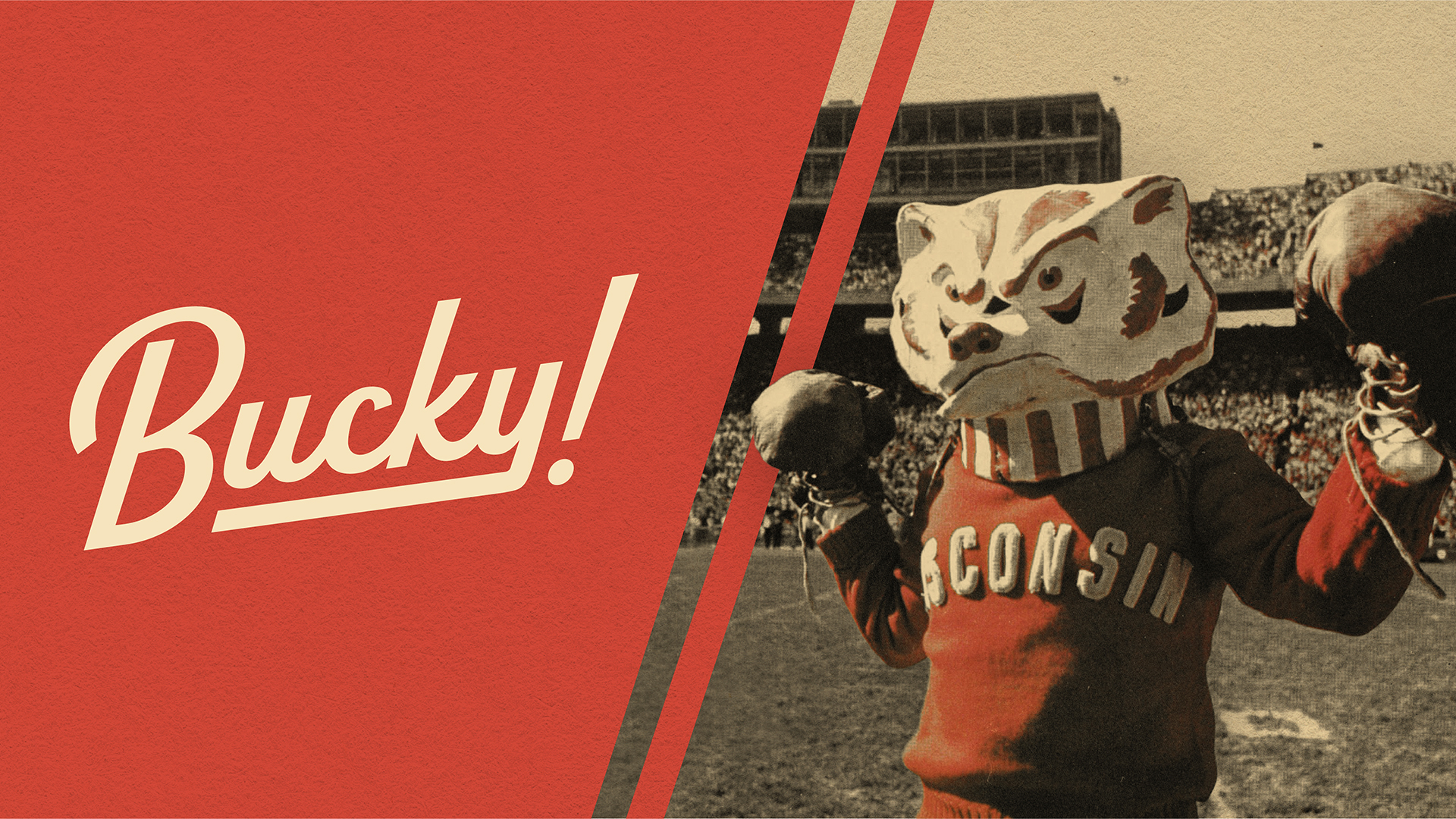



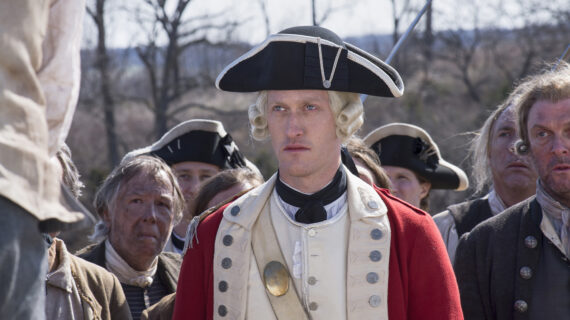

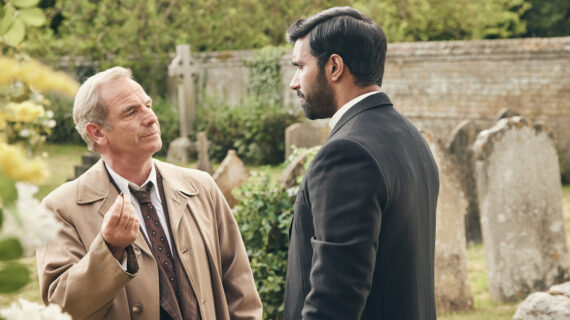
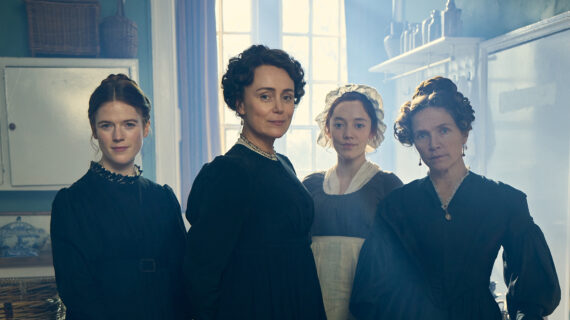

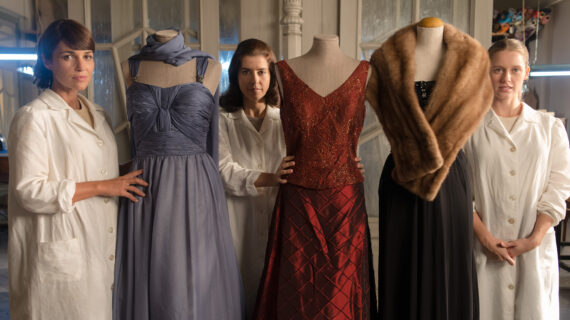
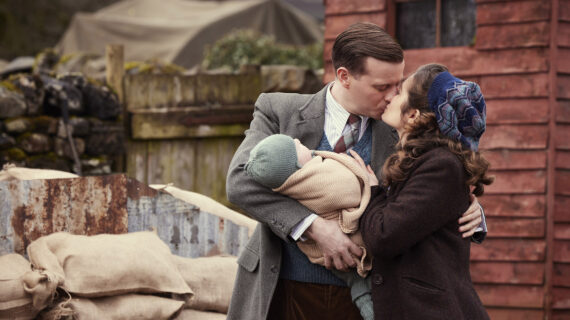





Follow Us